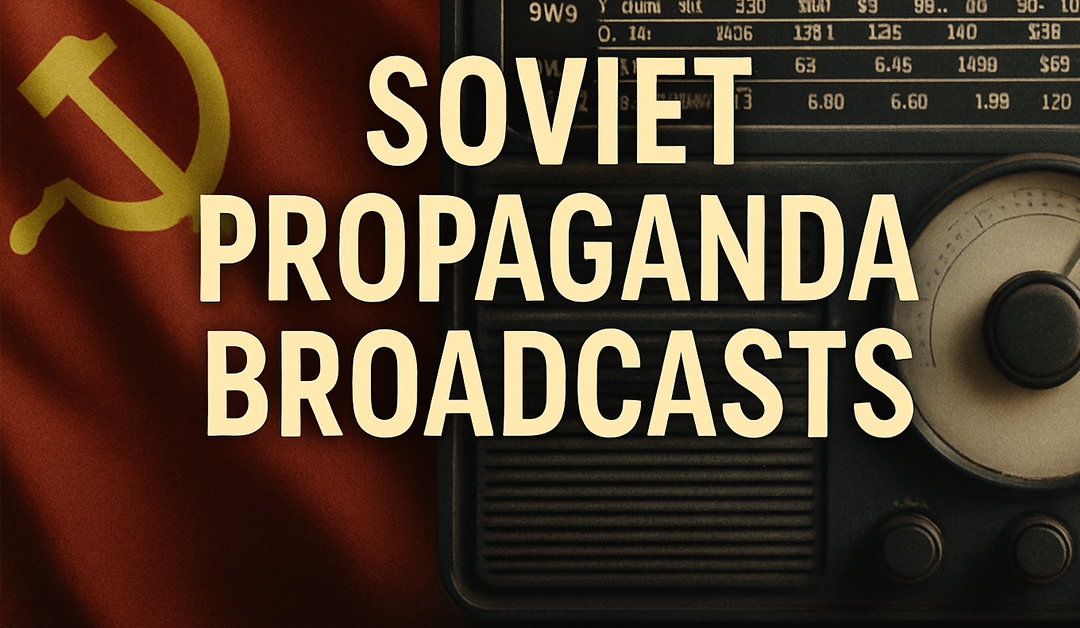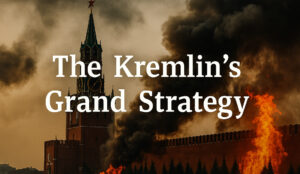Declassified report reveals how Stalin’s information machine sought to rewrite global public opinion-one frequency at a time.
"All resistance to Soviet policy is that of ‘reactionaries’ seeking to defeat peace, democracy, and security."
- Central Intelligence Group, July 1946
Before Twitter bots and disinformation campaigns, there was Radio Moscow.
In a newly declassified 1946 report prepared by the Foreign Broadcast Intelligence Service for the Central Intelligence Group (the forerunner to the CIA), U.S. analysts meticulously dissected the Soviet Union’s foreign-language propaganda operations.
The result?
A sweeping assessment of how the Kremlin used shortwave signals to target public opinion across dozens of countries-long before the Cold War had even begun in name.
This wasn’t just news manipulation. It was psychological warfare.
📡 Broadcasting Peace, Masking Power
The report describes how the Soviet Union devoted over 42 hours daily to foreign-language programming in 31 languages. Audiences spanned Europe, the Middle East, Asia, and Latin America.
The content split into two key tracks:
- Praise for the Soviet system
- Attacks on "reactionary" governments, especially the U.S. and U.K.
The U.S. was depicted as a capitalist imperialist state, run by elites, animated by atomic blackmail, and intent on undermining Soviet "peace and democracy."
At the same time, the USSR styled itself as a tireless guardian of peace, victimized by warmongers and misunderstood by reactionary forces in Washington and London.
"The Soviet Government’s foreign policy is one of peace, international cooperation, and unity. All resistance to it is portrayed as inherently sinister."
🌍 Targeted Narratives by Region
The Soviets didn’t blast the same message everywhere. Each region received tailored propaganda based on geopolitical stakes:
🇪🇸 Spain: Nonstop anti-Franco messaging, portraying him as a fascist relic propped up by British and American hypocrisy.
🇬🇷 Greece: Attacks on the monarchy and right-wing forces, with strong support for the communist-aligned E.A.M. resistance.
🇮🇷 Iran & Arab States: The USSR’s Tabriz-based Azerbaijani station denounced both Iranian and British "imperial repression," especially regarding oil.
🇨🇳 China: The U.S.-backed Nationalist government was branded a pawn of "foreign reactionaries," while the Chinese Communist Party was hailed as the people’s legitimate voice.
🇯🇵 Japan: The U.S. occupation was depicted as preserving imperialist structures and sidelining real democracy. MacArthur wasn’t targeted directly, but the occupation was painted as a capitalist soft coup.
🇰🇷 Korea: Soviet-controlled North Korea was "unified and efficient," while the U.S.-backed South suffered from "party politics and foreign manipulation."
🇦🇹 Austria: American and British forces were accused of harboring Nazis and war criminals.
🇺🇸 United States: Strikes, unemployment, racism, and the Ku Klux Klan were highlighted as proof of capitalism’s decay. Reactionary U.S. policy was condemned as "atomic diplomacy" aimed at global domination.
"Moscow’s broadcasts link American support for democratic allies with imperialism. The U.S. is simultaneously a warmonger and a hypocrite."
📑 Broadcasts as Foreign Policy
According to the report, Soviet radio was not an independent media apparatus-it was a direct extension of Stalin’s foreign policy arm.
Every message was centralized, controlled, and calibrated. Local announcers with regional accents were used to mask the origin of narratives, and Soviet victories were glorified in nearly every transmission. Key themes included:
- "The USSR defeated fascism-atomic bombs didn’t matter."
- "The Red Army is a liberator, not an occupier."
- "The U.S. is manipulating the UN and stifling equality."
- "Wherever the U.S. spreads democracy, it supports fascists."
🔥 America Under Fire
More than any other target, the Soviet broadcasts zeroed in on the United States. The themes were consistent:
- U.S. interest in overseas bases was framed as "imperial occupation."
- U.S. foreign aid was painted as bribery to install puppet regimes.
- The American press was accused of paranoia, distortion, and racism.
Ironically, while the Soviet broadcasts sharply attacked President Truman’s policies, they consistently praised Franklin D. Roosevelt, framing his death as the moment America was hijacked by imperialist hawks.
"The United States, prodded by a small group of reactionaries in high places, is pursuing a policy detrimental to peace and international unity."
🧠 Information Warfare, 1946-Style
Perhaps the most chilling insight? Moscow didn’t deny the legitimacy of the U.S.-they denied the legitimacy of its intentions.
Their broadcasts subtly encouraged citizens in the West to question their governments, challenge their press, and suspect their allies-all under the guise of Soviet friendship and peace.
This was not just propaganda.
It was strategic psychological subversion decades ahead of its time.






